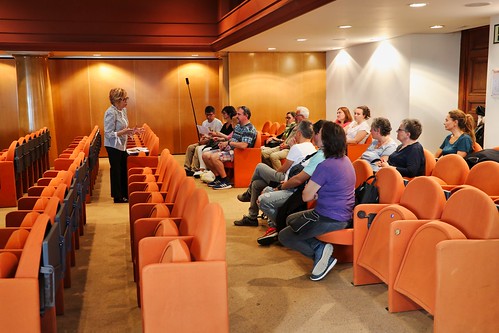01 October 2022
Bilbao Campus
Under the motto "The city of senses", the 6th Open House Bilbao Festival was held on 1 and 2 October. Once again this year, Deusto joined this initiative and opened its doors to those interested in learning about the University’s historical and artistic heritage. The academic centre offered visits to the buildings of La Literaria, La Comercial and CRAI- library.
The open visits were complemented by other unique visits carried out by volunteers from the Pedro Fabro Association. Rosa Miren Pagola (in Spanish) and Maite Uriarte (in Basque) were in charge of explaining the ins and outs of the Deusto Literary University (1886), the largest building constructed in Bilbao in the second half of the 19th century, together with the Casa de la Misericordia. The project was drawn up by the Madrid architect Francisco de Cubas, with the participation of the Bilbao architect José María Basterra.
In turn, Marian Sierra showed La Comercial de Deusto (1916), a building designed by C. E. Amann and J. M. Basterra, and conceived as a building parallel to and at a set back from the University of Deusto's Literary building, thus creating a small university campus in Bilbao. The Pedro Fabro Association, named after one of the founders of the Society of Jesus, was recently created and is made up of retired members of the University of Deusto.
Open House is an international festival of architecture and urban planning that was launched in London by Victoria Thornton in 1992, and has spread to other cities at the cultural forefront of architecture and design over the last few years. For 48 hours a year, the doors of different buildings in the city are opened free of charge, with the aim of promoting the presence of design and architecture among citizens under the motto "48 hours to discover the city together".
The University of Deusto is one of the 64 landmark buildings in the city taking part in Open House Bilbao. The aim of this initiative is to bring not only architecture and urban planning, but also history and culture, closer to citizens, because architecture is often far removed from the citizens' everyday life.

